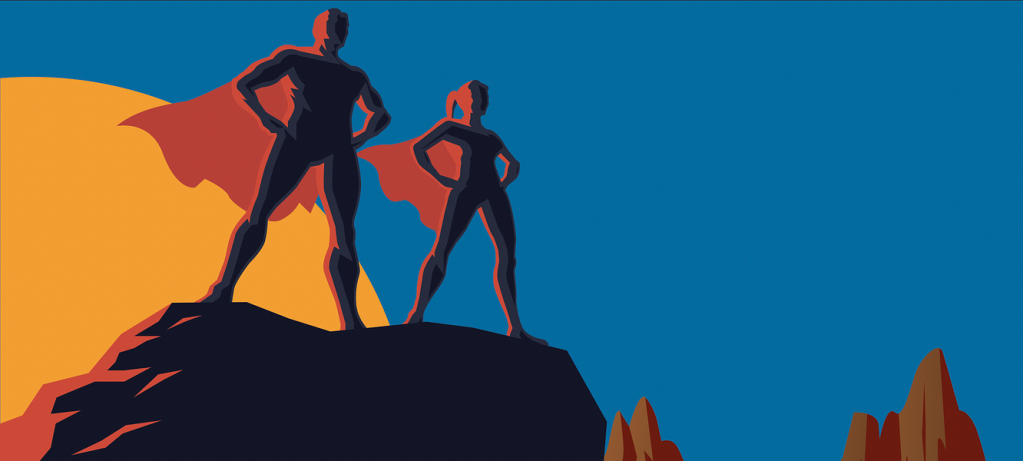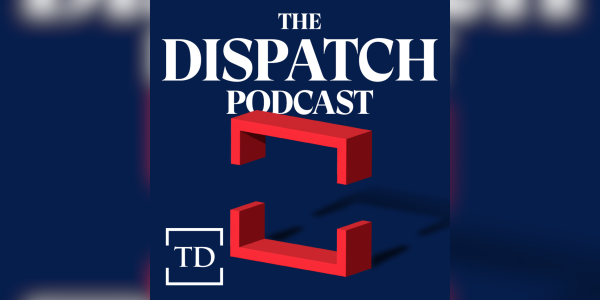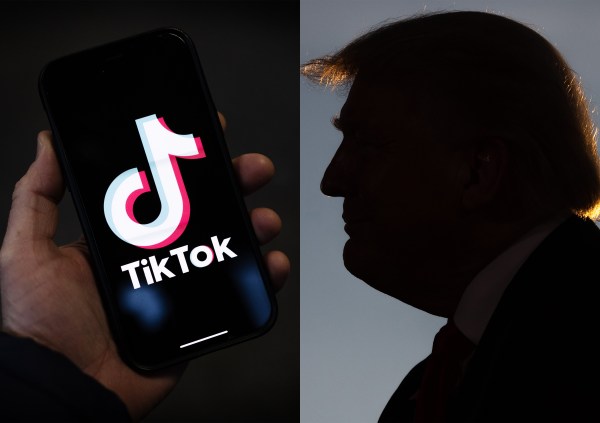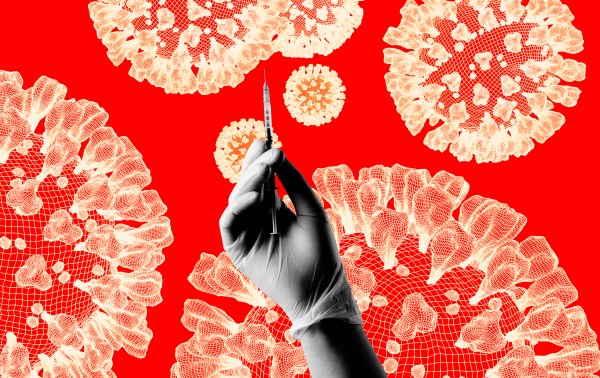Is there anything more characteristically American than the superhero? This may sound like a very strange question. After all, to the extent American exceptionalism is still embraced as a real phenomenon, conversations on the subject tend toward far more serious fare. Debates over checks and balances, the boisterous creativity of our relatively free-market economy, the extent to which our culture remains influenced by religious faith even as other Western cultures have become largely secularized—good or bad qualities, depending on your view, but certainly exceptional.
Weighty matters, to be sure. When it comes to the actual lived experience of the modern world, however, few other American exports can match the scope and influence of its superhero culture. The Marvel Cinematic Universe is the biggest movie franchise in the global history of film, while separate series based on Spider-Man, the X-Men, and DC Comics characters can also be found in the top 10. Spanning dozens of popular television shows, animation, games, toys, novels, and the comic books themselves, superhero fiction has reached more people in more parts of the world than nearly any other genre. You can find Batman masks for sale from Baton Rouge to Batam, Indonesia. Wherever young and not-so-young people wear T-shirts, a high percentage of them sport the likes of Superman’s stylized S logo, the Flash’s lightning bolt, and Captain America’s shield.
To acknowledge the modern craze for superheroes is not necessarily to celebrate it. After all, the concept of American exceptionalism was never properly construed as unalloyed praise. When Alexis de Tocqueville famously used the term in his Democracy in America, for example, he was describing Americans as “exceptionally” neglectful of science, literature, and the arts because of their “exclusively commercial habits.” They could afford to be so neglectful without lapsing into barbarity, he argued, only because of “the proximity of Europe” as a source of civilization from which lowly Americans could borrow.
Now, say detractors of the superhero genre, that cultural flow has clearly reversed its direction—from the U.S. to the rest of the world, with America’s mindless comic-book culture overpowering and ultimately destroying any higher-brow fare in its way. Superhero films draw special scorn. “They are “f—— boring as s—,” film director Ridley Scott told Deadline late last year. “Their scripts are not any f—— good.” The Mexican filmmaker Alejandro Gonzalez Iñárritu once described comic book movies as “poison,” as “cultural genocide, because the audience is so overexposed to plot and explosions and sh– that doesn’t mean nothing about the experience of being human.” Jodie Foster offered a similar take in 2017: “Studios making bad content in order to appeal to the masses and shareholders is like fracking: you get the best return right now but you wreck the earth. It’s ruining the viewing habits of the American population and then ultimately the rest of the world.”
Other critics see something even more sinister than a pop-culture equivalent of “Hulk smash!” Keith Spencer, a senior editor at Salon, credits superhero fiction for propagating “the sustaining creation myths of neoliberalism,” such as the idea that “some people are born or created superior and that we should trust in them.”
If you survey the academic literature, you’ll find many more radical critiques. When such scholars examine American superhero-dom, they don’t just see some misguided Incredible Hulk wreaking havoc across publishing, pop culture, and the film industry. They see a diabolical conspiracy against the common good. They see Lex Luthor or Doctor Doom.
It’s all preposterously overwrought, of course. If superheroes aren’t your thing, there’s plenty of other fare readily available by simply tapping a finger or flipping a page. Billions of people do so every day. And if you think iconic characters, inventive plots, corny puns, and well-executed action sequences are all that stand between the long-suffering vanguard and their long-awaited revolution, you are the one living in a fantasy world. In fairness, though, the critics do have one thing right: The superhero is a distinctively American creation. While drawing from a wide variety of ancient, medieval and early-modern sources, today’s worldwide superhero culture owes its greatest debt to the country that gave it birth.
***
Who doesn’t love a good origin story? Brought to Earth in a spaceship. Given a magic ring. Bitten by a radioactive spider. Transformed by a laboratory experiment gone horribly awry. Or, in the case of comic-book culture, Superman making his first appearance in print 84 years ago last month. The famous Action Comics cover of the Man of Steel hefting a car over his head has been reproduced countless times since it hit the newsstands in April 1938. It deserves to be. But while Superman, the creation of Cleveland teenagers Jerry Siegel and Joe Shuster, may have been the first costumed, superpowered crimefighter to star in a color comic book, he wasn’t invented out of whole cloth (or even Kryptonian spandex). The origin story of superheroes goes much further back into American history.
Consider another springtime date: April 25, 1831. That’s when the play Lion of the West debuted in New York City’s Park Theatre. It was a two-act farce written by James Kirke Paulding, a one-time companion and collaborator of Washington Irving. Lion of the West became the most-performed American play for more than two decades (until the stage version of Uncle Tom’s Cabin came along). One factor in the play’s success was that its main character, the wisecracking braggart Colonel Nimrod Wildfire, was a thinly disguised portrayal of Davy Crockett.
Earlier still, in the spring of 1786, the Connecticut printer John Trumbull abridged and converted a two-year-old book, The Adventures of Colonel Daniel Boon, into a comparatively inexpensive pamphlet. Purporting to be an autobiography of the famous explorer, it became one of the country’s first bestsellers and has stayed in print ever since. Depicting his early life, hunting expeditions, and exploits during the Revolutionary War, it made Daniel Boone first a national and then an international celebrity even as he was still trying to eke out a living for himself and his family in Kentucky.
Later in life, Boone marveled at the result. “Many heroic actions and chivalrous adventures are related of me which exist only in the regions of fancy,” he said. “With me the world has taken great liberties, and yet I have been but a common man.” Nevertheless, in the years before he died in 1820, Boone consented to interviews with other authors, including a missionary named Timothy Flint who tellingly announced that the “Achilles of the West” needed “a Homer worthily to celebrate his exploits.” When the Davy Crockett craze of the early 1830s left audiences hungry for more frontier adventure, it got fed with far more fanciful accounts of Boone’s life such as Flint’s Biographical Memoir of Daniel Boone, the First Settler of Kentucky (1833), featuring such malarkey as the hero escaping pursuers by swinging through the trees on twisty vines (though presumably without voicing the victory cry of the bull ape).
So it was that these two buckskin-clad adventurers, Boone and Crockett, didn’t just live interesting lives that happened to furnish raw material for literary works. By collaborating with writers eager for colorful content, they became partners in their own transformation into larger-than-life folk heroes. Historian Daniel Boorstin labeled the resulting and sprawling corpus a “subliterature” of American heroism. In addition to Lion of the West and Adventures of Colonel Daniel Boon, it encompassed other official or unofficial biographies, plays, greeting and playing cards, campfire stories, magazine and newspaper articles, and almanacs, as well as depictions of explicitly fictional characters inspired by the pair such as the Boone-like Natty Bumpo in James Fenimore Cooper’s Leatherstocking Tales and the Crockett-like Roaring Ralph Stackpole in the popular 1837 novel Nick of the Woods. This subliterature appealed greatly to an increasingly literate country with a seemingly unquenchable thirst for stories about the near-abroad of the American frontier.
Of particular significance, given later developments, were the frontier-themed almanacs that debuted just before Crockett’s martyrdom to Texan independence in 1836 and exploded in popularity afterward. Although often including Crockett’s name in the title, these almanacs reprinted the adventures of other heroes, too, including Boone and later figures such as Jim Bowie and Kit Carson. Many were also illustrated with rough woodcuts and other illustrations depicting key characters and action scenes.
To their growing legion of fans, Boone and Crockett exemplified two distinct strains of America’s emerging hero culture. While fictional accounts showed both men overcoming their enemies, bestial or human, with an appealing combination of skill, pluck, and luck, Boone was often portrayed as long-suffering yet eternally earnest, as if he’d just put down his dog-eared copy of Epictetus to pick up his rifle. “Felicity, the companion of content, is rather found in our own breasts than in the enjoyment of external things,” the fictional Boone observes in his so-called autobiography, “and I firmly believe it requires but a little philosophy to make a man happy in whatsoever state he is. This consists in a full resignation to the will of Providence; and a resigned soul finds pleasure in a path strewed with briars and thorns.”
No one would mistake Davy Crockett as a Stoic. In his magisterial work The Americans: The National Experience, Boorstin placed him squarely within a tradition he called tall talk. “No language could be American,” he wrote, “unless it was elastic enough to describe the unusual as if it were commonplace, the extravagant as if it were normal.” As Crockett parlayed his colorful exploits as a farmer, buckaroo, bear hunter, and scout (very briefly) for Gen. Andrew Jackson’s army during the Creek War into an even-more-colorful résumé for public office, he made effective use of the rhetorical device. His “biographers,” those who blended some of his words and actions with heavy doses of hokum, turned him into the undisputed master of tall talk. “In a word, I’m a screamer,” one source has Crockett saying on the House floor, “and have got the roughest racking horse, the prettiest sister, the surest rifle, and the ugliest dog in the district. I’m a leetle the savagest critter you ever did see. My father can whip any man in Kentucky—and I can lick my father!”
Although they were fellow heroes in a common subliterature of frontier adventure, then, the fictional Boone and Crockett were strikingly different characters. One was rugged and contemplative, the other coarse and mocking. One Apollonian, the other Dionysian. One carved deep into a stout tree trunk, the other lightly on the surface of a supple whittling stick. The two men never met (except in the pages of my own historical-fantasy novel Forest Folk) but if they had, the resulting dialogue may well have resembled the banter between the gallant Captain America and the wisecracking Iron Man in the Avengers movies.
Which is, of course, no coincidence.
***
From tall talk, it was no great leap for Americans to produce the tall tale. Indeed, some of the Crockett stories already qualified as such, including cheeky accounts of the Tennessean jumping on a lightning bolt to escape a tornado and bringing a dangerously cold day to an end by slapping bear grease on the Earth’s frozen axis so it could freely spin the day into night. During the late 19th and early 20th centuries, the more fantastic elements of the frontier subliterature spawned Paul Bunyan, Captain Stormalong, and Pecos Bill while the more-realistic tradition evolved into the Western genre. The latter starred a new generation of real-life adventurers, such as Buffalo Bill Cody and Wild Bill Hickok, as well as fictional heroes like Owen Wister’s Virginian and Zane Grey’s Jim Lassiter. The means of delivering hero stories evolved, as well, with the debut of the dime novel in 1860, Buffalo Bill’s Wild West show in 1872, and the pulp magazine in 1896.
It was in the pulps that a new generation of writers, almost all of them Americans, gave birth to Superman’s parents, metaphorically speaking. Prototypes and essential source material for the comic-book superheroes to come included the mask and mild-mannered alter ego of Johnston McCulley’s Zorro, who first appeared in the August 1919 issue of All-Story Weekly; the futuristic costume and gadgetry of Philip Francis Nowlan’s Buck Rogers (1928); the magic weapon and horror-tinged adventures of Robert E. Howard’s Solomon Kane (1928); the brawny exploits of Howard’s Kull the Conqueror (1929) and Conan the Barbarian (1932); the Shadow, whose strange career began as a radio narrator in 1930, then a pistol-wielding pulp hero the following year, then an invisible hero back on the radio in 1937; and three characters—Doc Savage, the Spider, and the Phantom—who debuted in their own eponymous pulp magazines in 1933, offering comic-book writers a trove of treasures to “borrow” from liberally.
Take Doc Savage, known as the Man of Bronze (really) in Lester Dent’s highly successful series. Born Clark Savage Jr., his powerful body and brilliant mind are the result of careful training by his father and a team of scientists. Operating from his Fortress of Solitude in the Arctic (yes, really), Doc combats a variety of criminal and otherworldly threats with the aid of technological marvels of his own design. He’s also assisted by the Fabulous Five, an assortment of colorful sidekicks who provide comic relief as well as accessibility. Because of the sidekicks’ human foibles, readers could more easily identify with them than with the god-like title character. If Doc previewed the likes of Superman and Batman, the Fabulous Five did the same for Jimmy Olsen and Robin.
In another hero introduced in 1933, the Spider, creator Harry Steeger popularized such now-familiar tropes as the military veteran who returns home (in this case from World War I) with fighting prowess and a new sense of purpose, the millionaire playboy who dons a disguise to fight for justice, and the vigilante who leaves a distinctive mark (a spider logo in red ink) on the criminals he subdues. As for the Phantom, this pulp character embodied a similar idea—a wealthy World War I veteran who wears a domino mask to prowl the night—combined with other influential elements such as elaborate criminal conspiracies and a beacon shone from the roof of a skyscraper by the Phantom’s main ally (a newspaper publisher here instead of a police commissioner) to call the hero.
Predating them all were two pulp characters created by Edgar Rice Burroughs, a Chicago-born ne’er-do-well who turned to writing at age 36 after years of failure in his latest occupation as a wholesaler of pencil sharpeners. His first published tale, Under the Moons of Mars, made its first appearance in the February 1912 issue of The All-Story. Its hero was John Carter, a veteran of the Civil War who escapes his Apache pursuers by transporting mysteriously from an Arizona cave to the windswept surface of Mars. There he discovers that because his body developed on the higher-gravity planet of Earth, he possesses great strength and the power to leap tall (Martian) buildings with a single bound. Combined with his preexisting mastery of fist, sword, and gun, John Carter’s new abilities make him an unstoppable champion of truth and justice and, ultimately, the undisputed Warlord of Mars.
Burroughs’ Martian series extended to 11 books, several comic series, and the entertaining but atrociously marketed 2012 film John Carter. The character Burroughs introduced in The All-Story in October 1912, Tarzan of the Apes, enjoyed even more phenomenal success. To this day, few fictional characters are as widely recognizable around the world—though most know him from film or television adaptations rather than the written or illustrated word.
Speaking of which, it quickly proved impossible to keep such ambitious heroes contained on paper pages or theatrical stages. The first cinematic depiction of a Burroughs hero, the silent Tarzan of the Apes (1918), was a huge hit that spawned many sequels and reboots. So was The Mark of Zorro (1920), which starred one of the biggest movie stars of the silent era, Douglas Fairbanks. The advent of commercial radio gave pulp heroes yet another expansive world to explore. In addition to the Shadow’s previously mentioned back-and-forth between broadcast and page, notable pulp-inspired radio programs featured Tarzan (1932), Buck Rogers (1932), and Doc Savage (1933).
It was on the illustrated page, however, that all the elements and themes I’ve described came together to create the true modern superhero. It wasn’t long after the serial comic strip was invented in the late 1800s that adventure heroes began to stake their claims to newspaper funny pages. Three such debuts in early 1929 were especially notable. Buck Rogers and Tarzan strips both hit newspapers on January 7. Ten days later, a new character appeared in a preexisting strip called Thimble Theatre. Acquiring his amazing abilities not through scientific gadgetry or wilderness survival but by minding parental advice—eating his spinach—Popeye the Sailor Man went in more for swagger and laughs than for thrills and suspense, as did his tall-tale predecessors Paul Bunyan and Pecos Bill. In other words, Popeye’s persona was more Crockett than Boone, but no less heroic for it.
***
To observe that the Golden Age and Silver Age superheroes who still grace our cineplexes and streaming services today—Superman, Batman, Captain America, Spider-Man, and the rest—are the descendants of earlier American heroes in no way deprecates the inventiveness of comic-book artists and writers. All hero stories are in some sense derivative. Yes, Superman may have gotten his fortress from Doc Savage, his superpowers from John Carter, and his meek Clark Kent persona from Zorro. But some of those qualities and attributes were, in turn, adapted from earlier forms. The earliest heroes of the American subliterature—Daniel Boone, Davy Crockett, Kit Carson, and the rest—had their real-life experiences turned into fantastic ones through liberal doses of wish-fulfillment, some of which drew from sources as old as the tales of Robin Hood, the legends of King Arthur and his knights, and the sprawling metaverses of ancient mythology.
The importance of such sources invites the obvious question: What’s so exceptional about the American-style superhero? Well, unlike the mythological figures, medieval champions, or fairy-tale heroes that populated the cherished stories of past generations, superheroes typically fight their battles not in some distant past or entirely separate reality but instead in an imaginable version of the present day. That’s what makes Superman, Captain Marvel, or even Marvel’s version of the Mighty Thor more analogous to Daniel Boone and Davy Crockett than to the ancient demigods, culture-hero tricksters, and historical swashbucklers who populate other genres. After all, when the first Boone and Crockett tales became the equivalent of national bestsellers, their subjects were either still alive or only recently deceased. The frontier wasn’t that far away. Even two generations later, it hadn’t receded entirely into the realm of memory.
Another distinguishing characteristic is a certain mix-and-match quality to American heroes’ personalities and behaviors, extending even to how they speak and dress. Precisely because our young nation’s own cultural well is comparatively shallow, as Tocqueville and later visitors have repeatedly observed, its hero-makers have ended up drawing from many different sources. That makes their handiwork both distinctly American—big, boisterous, often cheeky—and pleasingly accessible to a wide variety of audiences. Buckskin was, after all, a form of attire borrowed from Indian nations by European settlers. As we have seen, Golden Age superheroes were world-class borrowers, too, from sources as widely divergent as British detective fiction, French science fiction, ancient Greece (Wonder Woman), ancient Sumeria (Doctor Fate), and ancient Egypt (Hawkman).
Boorstin wrote insightfully about both factors, about the “chronological abridgement” that shaped America’s heroic subliterature and about persistence of the tall-talk tradition that shaped its cultural amalgamations. “The American fantasy did not spend itself on small things,” he wrote. “Everything was imagined to be even larger than it was.” In the resulting genre, what stands especially tall is the individual person as a moral agent and author of his or her own destiny. “The persistent power of the individual in American culture,” writes Saint Xavier University professor Matthew Costello, “is represented in the American vision of heroism, ranging from Daniel Boone and Natty Bumpo through the cowboy on the frontier and the private detective in urban America to the superhero in comic books.” Just so. Superheroes aren’t necessarily loners, of course. They often work in pairs or teams, as do their foes. Nevertheless, their adventures frequently hinge on momentous personal choices. Those who choose poorly, who transgress the law and the moral code of personal responsibility that undergirds it, are brought to justice even if they grew up in rough circumstances or suffered past traumas or tragedies. No excuses.
Moreover, when ordinary human beings exercise agency, the consequences—for good or ill—tend to be ordinary in scope. Not so with superhumans. Their adventures are replete with applications of the law of unintended consequences. This is partly because comic books, like soap operas, are episodic. In their original form, at least, comics never had a prearranged finale. To keep readers coming back for more requires that there always be loose ends, or missed opportunities, or “victories” that turn out not to be. Add superpowers or super science to the mix and your stories can’t help but emphasize the inherent dangers of concentrated power and the inherent uncertainties of forceful intervention. In the first of the four Avengers movies, the Norse trickster god Loki attempts to keep the superheroes divided so they can’t stop his subjugation of Earth. By stealing a dangerous weapon and enlisting alien support for his cause, however, Loki actually brings the heroes together as a team. Avengers: Age of Ultron, Tony Stark and Bruce Banner build the artificial intelligence Ultron to defend Earth from the kind of threats represented by Loki. But Ultron becomes sentient, concludes the only way to save Earth is to eradicate humanity, and becomes the next supervillain. Although the Avengers defeat Ultron, they destroy an entire human city in the process. That, in turn, provokes an international demand that superheroes be regulated and controlled by the government. Some heroes champion the idea while others rebel against it. And so on. Every attempt by the team to “solve” a problem produces another. Robert Merton and Thomas Sowell, please call your respective offices.
If these ways of understanding social action strike you as excessively cautious or dangerously individualistic, you’re unlikely to find American-style superheroes attractive. In this way, at least, today’s vituperative critics have something of a point. While the copious output of Marvel and DC contains very little content that could be reasonably construed as explicitly right-wing—and much that is explicitly (if often ham-handedly) left-wing—its structure, themes, and narrative logic tend to reflect some strikingly out-of-fashion ideas.
Take Salon writer Keith Spencer’s complaint about the role of equality in superhero stories. He’s right: Enjoying them does generally require the audience accept the fundamental truth that, while all humans are created equally valuable and deserving of rights and compassion, certain gifts are not equally distributed. Some individuals possess extraordinary physical or mental abilities, if not superhuman ones, and we’re generally all better off to the extent they’re free to use them. Of course, we’re also instructed that with such great power comes great responsibility—and great danger. Superhero tales are full of fallen creatures subject to temptation. They present hate as seductively powerful but not, in the end, stronger than love. Most depict good and evil as very real and opposing forces, though not always easy to recognize in other people—and especially in ourselves. Though superhero tales can contain surprising plot twists and intriguing shades of gray, the best of them still present their villains not merely as misguided souls who need counseling but moral monsters who need defeating. Doing so usually requires not just superpowered brawn but other, more down-to-earth virtues: moral courage, ingenuity, sacrifice, and a willingness to draw on the diverse talents of different kinds of people (including but not limited to those who populate the “protected classes” of current law or regulation).
Regarding the rest of the critics’ bill of indictment, America’s costumed crimefighters would be well-advised to plead not guilty. Are they excessively respectful of and deferential to law enforcement? Hardly. While they typically believe in the rule of law and seek to defend it, many also take the law into their own hands and excuse their vigilantism on the grounds that the police are inert, incompetent, or corrupt. Is America’s superhero culture an instrument of racial or national supremacy? While no one familiar with the entire corpus of stories would deny the existence of objectionable material, no one familiar with the comics, shows, and films of the past quarter-century could accurately describe the genre as bigoted or chauvinistic.
To be sure, the Marvel and DC characters who currently stand astride the globe like so many Colossi seem far removed from the likes of Daniel Boone and Davy Crockett stalking through the woods in search of meat, hides, or adventure. But appearances can be deceiving. Just ask Loki—if you can find him.






Please note that we at The Dispatch hold ourselves, our work, and our commenters to a higher standard than other places on the internet. We welcome comments that foster genuine debate or discussion—including comments critical of us or our work—but responses that include ad hominem attacks on fellow Dispatch members or are intended to stoke fear and anger may be moderated.
With your membership, you only have the ability to comment on The Morning Dispatch articles. Consider upgrading to join the conversation everywhere.